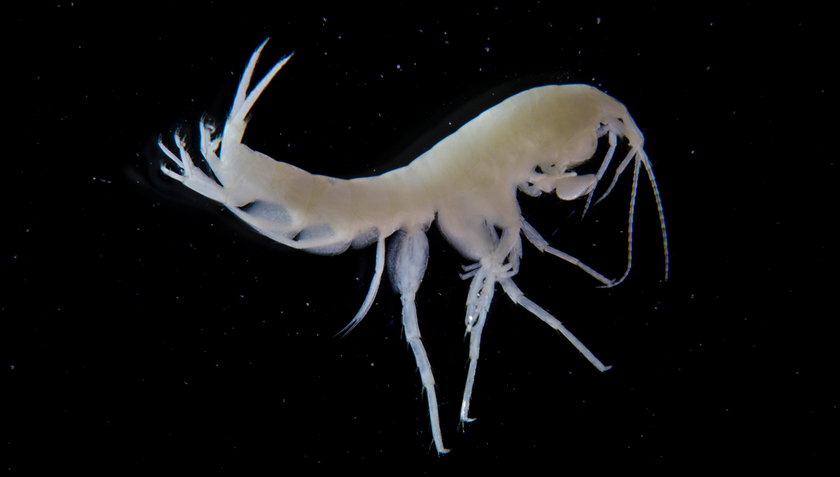Protecting biodiversity underground

Niphargus auerbachi, one of around 40 different amphipod species that live in Swiss groundwater. (Photo: Roman Alther, Eawag)
Groundwater harbours an unprecedented diversity of invertebrate organisms. These feed on microbes, among other things, and help to ensure that the groundwater can be used as drinking water. This biodiversity is reduced in areas with intensive agriculture. Researchers are in favour of systematic monitoring and red lists.
Until a few years ago, we were unaware of the unique diversity of highly specialised organisms that exist in groundwater. Eawag researchers gained an initial insight into the hidden underground world by working with around 600 water suppliers throughout Switzerland as part of a citizen science project. They collected amphipods, which are among the largest invertebrates in groundwater, from their well pits and sent them to Eawag. “We have found around 40 different amphipod species; around a dozen of these are only found in Switzerland and have yet to be scientifically described,” says Mara Knüsel, aquatic ecologist in the Eawag research group “Spatial Dynamics”, which is headed by Professor Florian Altermatt and studies biodiversity in aquatic ecosystems.
In addition to the amphipod studies, Altermatt’s team has developed a method in recent years that can be used to extract environmental DNA from water samples. These are traces of genetic material that organisms leave behind in the water, for example through their excretions. The analyses revealed that a wide variety of organisms are present in the groundwater. These help to purify the water. “This is an important ecosystem service that is provided by the organisms in the groundwater,” notes Knüsel. In their investigations, the researchers were also able to determine the influence of land use. Where intensive arable farming is practised, they found significantly fewer amphipods and greatly reduced microbial diversity in the groundwater.
Surviving the ice age
The researchers also discovered evidence that some of the various amphipod species even survived the last ice age in Switzerland 20,000 years ago in the liquid groundwater in karst regions, while most of the creatures in the permafrost on the surface disappeared and only migrated back afterwards. “The groundwater habitat is one of the ecosystems that have had the most constant environmental conditions over the last few hundred thousand years,” says Altermatt. “That’s why this system is also very vulnerable if we change it.”
According to the law, underground bodies of water should also be preserved as natural habitats for native organisms. “Our research is an important step in documenting what is present,” says Knüsel. The next step for the researchers is to develop monitoring methods based on environmental DNA analyses. This could be used to systematically monitor groundwater ecosystems. Red lists for important groundwater organisms, such as amphipods, would also be necessary.
Links
Created by Barbara Vonarburg for the Info Day Magazine 2025




